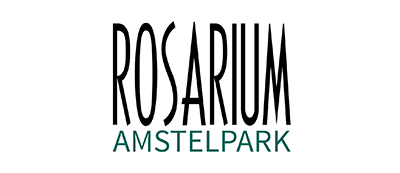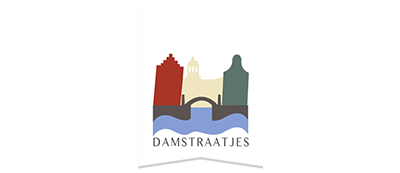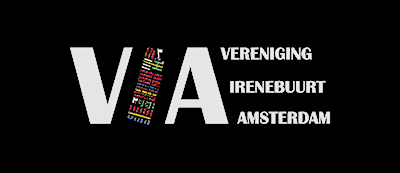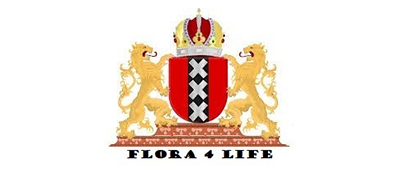A manifesto against the Erotic Centre and a plea for improving the quality of life in Amsterdam city centreOn 16 February 2023, the Amsterdam municipal executive (mayor and aldermen) presented the results of an in-depth location study for a so-called Erotic Centre (EC). The council is considering three sites: two in Amsterdam South and one in North. The idea is that the EC will accommodate some 100 workspaces for sex workers, plus areas for hospitality, culture, art and entertainment.
The announcement led to outrage among many Amsterdam residents. Politicians, residents, employers, employees, business owners, students, and visitors clearly expressed their belief that an EC would not suit their neighbourhood. And this is not just the well-known ‘not in my back yard’ effect (NIMBY), it was preceded by a ‘not in my front yard’ movement.
A vocal group of residents from the Red Light District (De Wallen in Dutch) and surroundings have been campaigning against the crowds and nuisance in their area in recent years. The Action Group ‘Stop de Gekte’ [stop the madness] makes a direct connection between these problems and the presence of window prostitution and coffee shops. In fact, while there are already far fewer windows and coffee shops than 15 years ago, the crowds and nuisance in the area have got worse in that same period.
This discussion should not be about a building, it should be about the city. Not about a neighbourhood, but about an entire ecosystem. What will happen to the Red Light District if part of its character is removed? It has traditionally been the erotic center of Amsterdam and such a tradition cannot simply be moved. This article provides standpoints against the creation of an EC and provides suggestions for enhancing the quality of life in the city centre.
Part I: Manifesto against the Erotic Centre
An EC is undesirable regardless of location. It is a poor tactical solution to a mostly misunderstood issue. It’s not the sex workers, companies or residents of the Red Light District that have changed over the years, it’s the area and the visitors that have undergone a major transition. The city council has actively tackled the issue of the Red Light District since 2007 as part of Project 1012, which was aimed at reducing the number of prostitution windows and enhancing the public space. Nearly 100 windows and 50 coffee shops were shut down until Project 1012 concluded in 2018 and replaced by a generic approach for the city centre.
Over the last decade, the Red Light District changed from a ‘no go area’ to a safe(r) and (more) attractive neighbourhood. At the same time, mass tourism became increasingly prevalent, partly due to marketing activities by the city itself. The crowds largely gather in the Red Light District due to its central location and the efforts of the municipality to clean up the neighbourhood. It has even become a suitable place for families to visit.
There are good reasons for visitors to come to the area. It has significant historic and cultural value, with venues such as Café 't Mandje from Bet van Beeren (an iconic bar in the gay scene), condom specialty shop De Condomerie, erotic theatre Casa Rosso, popular entertainment venue De Bananenbar, and coffeeshop The Bulldog. According to many, the area also has the prettiest canals and buildings in Amsterdam. The popularity and resulting crowds and nuisance logically led to complaints among (some) residents. These complaints should not be linked to the erotic activities however, as those activities have been taking place for many years. It is important to consider the crowds in the area independent from window prostitution.
The city council states that the total number of licensed sex workplaces in the city should not decline. That is why it developed a plan to move a large part of these sex workers from the city centre to other neighbourhoods. Although the EC and its hundreds of sex-work places would immediately become the largest brothel in Europe, it would not prevent the crowds and nuisance in the Red Light District.
The sex workers themselves are not keen on the EC either. They sense that they are being forced into the role of victims and that nobody is actually listening to their wishes. Last year, some 130 sex workers from the district sent an open letter to architects, construction companies and developers asking them not to participate in the plan. Advocacy group Red Light United recently commissioned a survey of sex workers to gauge their opinion about an EC, and 93% indicated their opposition. They stated that they see the Red Light District as a safe working environment and fear desolate surroundings at the locations proposed by the municipal executive.
The municipality set three goals which the scenarios for window prostitution should fulfill: reducing nuisance in the city centre, improving the position of sex workers, and combating criminal influence including human trafficking. The construction of an EC will not help achieve these goals.
1. Reducing nuisance in the city centre
Prostitution has been a constant feature of the area since the fifteenth century. Sex workers are incorrectly blamed for the increasing crowds and antisocial behaviour among visitors. The latter involves groups of tourists who see Amsterdam as a city where everything is possible and allowed, regardless of social status. It does not involve (regular) clients of sex workers, who in fact value their anonymity and generally move around in silence. The EC will not convince troublemakers to move to another neighbourhood as they’ll continue to visit the Red Light District for all the other facilities. Combatting antisocial behaviour requires a solution within the area, such as a larger police presence and greater enforcement, something which residents, business owners and sex workers say is lacking.
2. Improving the position of sex workers
Who better to judge the position of sex workers than sex workers themselves? The main objection from the advocacy group Red Light United is that an EC will be a closed environment. The windows in the Red Light District are considered safer by sex workers because the curtains are open and there are plenty of people in the streets. The setup also enables them to screen potential clients before allowing them inside. The Prostitution Information Centre (PIC) fears that an EC would endanger the welfare of sex workers if located in another neighbourhood. They expect an increase in the discrimination and stigmatization of sex workers if everything is located under one roof. Traveling to and from the proposed locations creates safety concerns, especially when sex workers may carry large amounts of cash after their shifts.
3. Combating criminal influenceMunicipalities have been responsible for their own prostitution policy since the abolition of the brothel ban in 2000. Wary of human trafficking and exploitation, many municipalities issue very few licenses. As a result, there are fewer and fewer legal places where sex workers can practice their profession, as is shown in research performed by Pointer. Of the 1350 sex companies, just 250 were remaining in 2021. If sex workers indicate that they won’t be working from the new, controlled EC, more will end up in an unsafe and uncontrolled circuit – the exact opposite of what the municipality is aiming for.
In 2022, Belgium became the first European country to completely decriminalize sex work by removing it from the criminal code. New Zealand had already done the same in 2003. Decriminalization is not the same as legalization, which applies in the Netherlands. To many, the conditions for working as a registered (legal) sex worker are a bridge too far which means that more sex workers work illegally and unsafely. The more regulations, the more illegality was the opinion of the Sorgdrager Committee in its report on window and street prostitution in the Municipality of Utrecht published last year. The committee pleaded for small-scale locations in city centres that can be more easily monitored by the police. Like Amsterdam’s Red Light District…
Part II: Plea for a more liveable city centre‘The Amsterdam city centre should once again become a place where all Amsterdam residents enjoy visiting and neighbourhood residents feel at home. Visitors from the rest of the country and abroad will continue to be welcome to our open, international city if they visit for the unique character of the city and show respect to the city and its people. A city centre with plenty of space for liberality, creativity and entrepreneurship, which cherishes its heritage, embraces cultural innovation and accepts that city life has rough edges. Where residents and visitors feel safe, a sense of community is revived, public spaces are clean and inviting, and facilities such as shops, education and (health) care facilities for residents are preserved. A city centre that has its own unique identity, where nuisance and crowds are reduced and a proper balance maintained between living, working and tourism.’
This is a quote from the city council itself, wording the ambition for its program for the city centre in 2022 (Uitvoeringsprogramma Aanpak Binnenstad 2022). Every Amsterdam resident would probably agree with this statement, whether they live in the centre or not. The program focuses on six priorities: mixed functions and diversity, control and enforcement, a valuable visitor economy, strengthening cultural diversity and neighbourhood identities, promoting a greater and more diverse housing availability and more living space, and increasing the greenery in public spaces. All these goals are important ways to enhance the quality of life in the city centre, but no solution for the crowds and nuisance. Building an EC in another neighbourhood will also not provide a solution, as explained above.
The nuisance problems are wide-ranging, involving antisocial behaviour, pollution and crime in the streets (dealers, pickpockets, fights). They can best be tackled – as they are at large festivals – by applying effective crowd management: controlling access, implementing one-way traffic and closing off streets, for example. In addition, police should have greater powers to tackle crime in the streets and surveillance at night should be increased. A structural solution for the under capacity in the police and enforcement agencies is crucial.
Tackling the crowds demands a broader plan. In 2019 urban planner Zef Hemel, commissioned by the council, presented an alternative plan for spreading the crowds. He proposed shifting the tourist streams to the Zuidas district via Damrak and Museumplein. This would demand a 24-hour programming in Zuidas and iconic architecture as part of a program that would also attract a different type of tourist. A comprehensive vision, such as the one proposed by Hemel, should be the starting point for a habitable city centre. The discussion should not focus on one building but encompass the entire city. It shouldn’t be about prostitution but about tourism. It demands a future-oriented vision on urban development. For an Amsterdam of which everyone can be proud.
On the 14th of September the endorsing parties of the Plea for improving the quality of life in the city centre, Manifest against an Erotic Centre have handed over more than 10.000 signatures to the mayor of Amsterdam. The number of people that sign the petition is still increasing. The spokespeople of the Plea for improving the life in the city centre also presented to mayor Femke Halsema an alternative plan of approach. Please click
here to read the plan.























































































